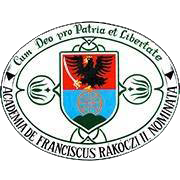Please use this identifier to cite or link to this item:
https://dspace.kmf.uz.ua/jspui/handle/123456789/1138| Title: | Approaches to Translation Quality Assessment |
| Other Titles: | Підходи до оцінювання якості перекладу |
| Authors: | Tomash Vrabel Врабель Томаш Vrábely Tamás |
| Keywords: | translation quality assessment;source text;target text;equivalence;adequacy;translator’s errors;non-quantitative models of translation quality assessment;quantitative models of translation quality assessment;communicative and functional approach |
| Issue Date: | 2020 |
| Publisher: | Видавничий дім «Гельветика» |
| Type: | dc.type.researchArticle |
| Citation: | Tomash Vrabel: Approaches to Translation Quality Assessment. In Науковий вісник Дрогобицького державного педагогічного університету імені Івана Франка. Серія: Філологічні науки (мовознавство). 2020. № 13. с. 28-36. |
| Series/Report no.: | Серія: Філологічні науки (мовознавство);№ 13. |
| Abstract: | Abstract. The article deals with the parameters of translation quality assessment. The author distinguishes three groups of target text users who must know the criteria due to various reasons. Literature review covers outstanding linguists’ views on “equivalence” and “adequacy”. Though these notions were thought to be synonymous, their meanings are different. Linguists come to the conclusion that equivalence and adequacy are interrelated, the former belongs to language, while the latter refers to speech. Some scholars even distinguish equivalence at different levels: word, idiom, grammar, and text. Translation quality assessment criteria are related to the notion of translator’s errors. The quality of translation is improved by attributing “weight” to each error, thus pointing to its seriousness. Linguists distinguish five to seven parameters of errors and / or subdivide them into two to four groups based on the severity of errors. The article scrutinizes quantitative and non-quantitative models of translation quality assessment. The first model checks one or several text fragments and, depending on translation quality, may allow or disallow a certain number of errors. This model assesses the translation accurately; however, it can only be used for non-expressive, i.e. technical texts. Adherents of the non-quantitative model assess texts based on their functional and stylistic characteristics. Though this model can be applied for belles-lettres style, adherents of this approach have not suggested a scale for translation quality assessment yet. The communicative and functional approach to translation takes into account pragmatic aspects of the communicative situation of both the source and the target texts. The author differentiates educational and professional translation. The former aims at making an adequate translation in cooperation with students, while the latter focuses on the final result. Резюме. У статті розглянуто параметри оцінки якості перекладу. Виділено три групи користувачів тексту перекладу, яким з різних причин необхідно знати ці критерії. В огляді наукової літератури проаналізовано погляди видатних мовознавців на «еквівалентність» та «адекватність». Попри позицію вважати ці поняття синонімами, наголошено на відмінності їхніх значень. Проте зауважено, що дослідники доходять висновку про взаємопов’язаність еквівалентності та адекватності: перше належить мові, а друге стосується мовлення; дехто з лінгвістів навіть розрізняє еквівалентність на різних рівнях: на рівні слова, сталого вислову, граматики та тексту. З’ясовано, що критерії оцінки якості перекладу пов’язані з поняттям перекладацьких помилок. Якості перекладу досягають наданням «ваги» кожній помилці з вказівкою на її серйозність. Дослідники виділяють від п’яти до семи параметрів помилок та / або поділяють їх на дві або чотири групи залежно від серйозності помилок. У статті детально проаналізовано кількісні та некількісні моделі оцінки якості перекладу, розроблені в сучасному мовознавстві. У першій моделі перевіряється один або декілька текстових фрагментів і, залежно від якості перекладу, дозволяється або не дозволяється певна кількість помилок конкретного типу. Переклад у цій моделі оцінюється точно, проте вона придатна для аналізу винятково технічних текстів, позбавлених експресивності. Прихильники некількісної моделі оцінюють тексти на підставі їх функціональних та стилістичних характеристик. Хоча ця модель може використовуватися для аналізу художніх текстів, прихильники цього підходу ще не запропонували шкали оцінки якості перекладу. Комунікативно-функціональний підхід до перекладу бере до уваги прагматичні аспекти комунікативної ситуації оригіналу та тексту перекладу. Автор виділяє навчальний та професійний переклад. Перший спрямований на процес знаходження адекватного перекладу разом зі студентами, тоді як останній зосереджений на остаточному результаті. |
| URI: | http://dspace.kmf.uz.ua:8080/jspui/handle/123456789/1138 |
| ISSN: | 2312-6353 |
| metadata.dc.rights.uri: | http://creativecommons.org/licenses/by-nc-nd/3.0/us/ |
| Appears in Collections: | Vrábely Tamás |
Files in This Item:
| File | Description | Size | Format | |
|---|---|---|---|---|
| Vrabely_T_Approaches_to_Translation_Quality_Assessment_2020.pdf | Tomash Vrabel: Approaches to Translation Quality Assessment. In Науковий вісник Дрогобицького державного педагогічного університету імені Івана Франка. Серія: Філологічні науки (мовознавство). 2020. № 13. с. 28-36. | 353 kB | Adobe PDF | View/Open |
This item is licensed under a Creative Commons License





